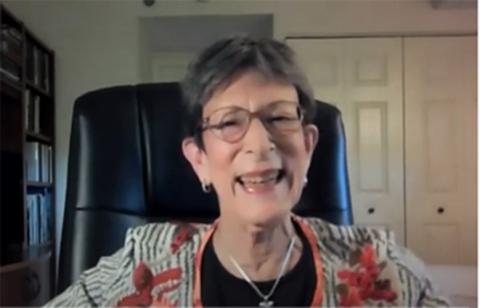Human Genetic Cell Repository Celebrates 50 Years

The year 2022 marked 50 years since the creation of the NIGMS Human Genetic Cell Repository (HGCR) at the Coriell Institute for Medical Research.
Former NIGMS Deputy Director Dr. Judith H. Greenberg spoke at the celebration of this hallmark anniversary, hosted by Coriell.
“When the repository was launched in 1972,” she said, “it was not only a visionary idea to build a repository that would represent a full range of genetic disorders, but it was also an altruistic idea because it was designed from the start to address the research missions of many of the NIH institutes.”
HGCR collects cell lines and DNA samples with a focus on those from people with rare, heritable diseases. The collection was first released in 1973 as a paper catalog with only a few genetic disorders and chromosomal abnormalities represented in its small number of cell lines.
Now, the collection boasts many thousands of cell lines and DNA samples that represent human inherited genetic disorders, healthy controls, human amniotic fluid cultures, fibroblasts with chromosomal abnormalities, cell lines from geographically diverse populations and much more—all available online. In fact, the collection includes more than a thousand different rare genetic diseases, some of which are the only samples in the world available to scientists studying them.
A sample donation from someone with a rare disease opens the door for researchers not only to study the specific disease but also to learn more about biology, genetics and health in general.
One example of an unexpected discovery is the development of a vaccine against the Ebola virus. Researchers studying samples in the NIGMS HGCR collection from people affected by Niemann-Pick Type C (NPC), a rare and fatal neurological disorder, determined that the protein mutated in a type of NPC is essential for the Ebola virus to enter cells. Researchers were able to use that new understanding to develop an effective vaccine.
Maintaining a scientifically useful and relevant repository over the course of 50 years has required foresight and adaptability in a world of ever-changing science and technology. This has meant continuing to grow the collection itself, adding newer samples and product types. This growth can help address a broader range of rare diseases and better represent human ethnic diversity.
While the repository started as a home to just cell lines, it now includes much more than that—even induced pluripotent stem cells (iPSCs) and high molecular weight DNA. iPSCs are powerful cell lines that allow scientists to grow nearly any type of cell in a dish and accelerate research in many areas. High molecular weight DNA allows scientists to better characterize structural variation in regions of the genome that may be more challenging to study with other approaches.
As the Coriell website notes, “When one donates to the NIGMS HGCR collection, it’s impossible to know all of the ways that a contribution may be used to improve human health.”
Find the full anniversary celebration online at https://bit.ly/3XTPwVc. For more information about HGCR, visit https://bit.ly/3Vjg5kU.
